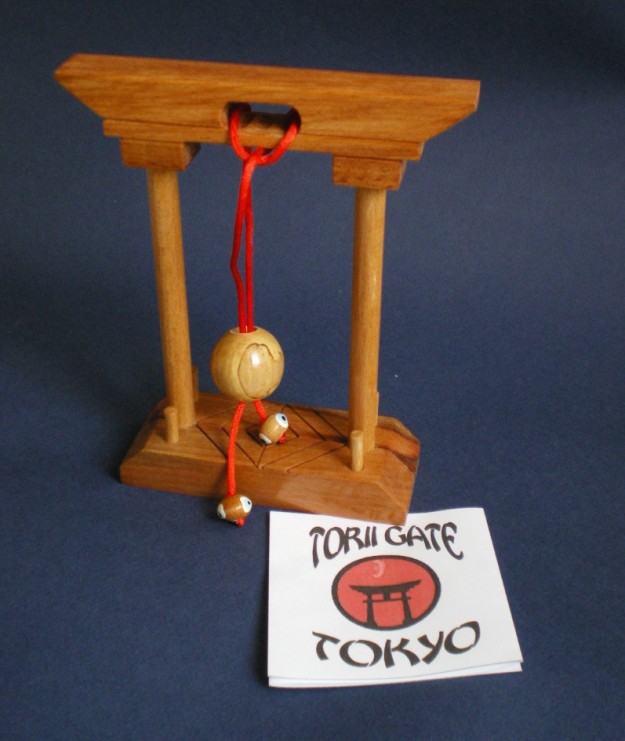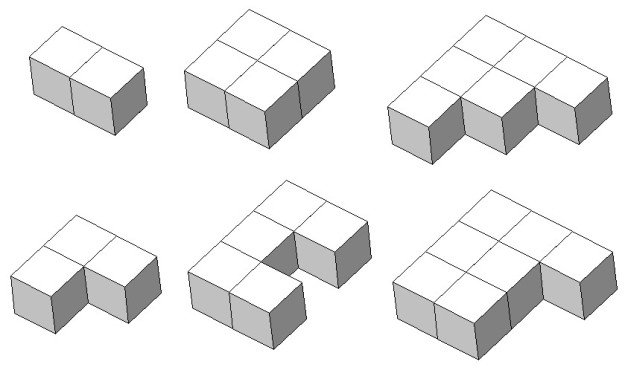Torii gate Osaka

Tori gates are Japanese gates. Tori gate puzzles are my home made three puzzle set. This puzzles are well known public domain puzzles. I made them as a coffee table puzzle with a different look. The wooden base for all this puzzles is same.
Part list
For top piece: 20 x 20 x 130 mm 1 pcs
Top ornaments 20 x 20 x 10 mm 2 pcs
For base 20 x 20 x 125 mm 1 pcs
Pillars 10 mm diameter x 120 mm 2 pcs
You can take all dimensions from scaled drawing. None of the dimensions is critical. I made all ornaments with my miter saw and with a small hand saw.
This puzzle is well known “African Ball puzzle”. The aim of this puzzle is moving one of the wooden ball to the other ball side. Rope arrangement is visible from photo. Rope thickness is about 3 mm. I advise a rigid (non elastic) rope. You can find the solution easily on internet if you make a Google search for African ball puzzle solution
Torii gate Tokyo

This is also a well known and simple puzzle. If you are familiar with string puzzles you can see the solution from photo. The aim of this puzzle is to free the rope and wooden ball. But looks nice on coffee tables. Small beads at the end of ropes are fixed by gluing them.
Torii gate Kyoto

The aim of this puzzle is taking both dark (small) ball to same side. Rope arrangement is visible from photo. After understanding the solution of African ball puzzle, you can solve this one easily. Two ends of the rope are fixed to the big yellow ball by gluing them.
If you want make your own Torii gate puzzles, you can download or preview this free PDF file including drawing for dimensions from here. (0.3 MB on secure server box.com) You can print last page without scaling and take dimensions by measuring with a ruler. None of the dimensions is critical.

























 The original of this puzzle has a two sided tray. I saw on internet some commercial productions also made with a two sided tray. I am a lazy craftsman and for this reason making a two sided tray was too much work for me. When I decided to make this puzzle, the origial shape of this puzzle inspired me a house shape. Instead of making a two sided tray, I made a simple chimney. The aim of this puzzle removing the small cube from the chimney and putting it into the house.
The original of this puzzle has a two sided tray. I saw on internet some commercial productions also made with a two sided tray. I am a lazy craftsman and for this reason making a two sided tray was too much work for me. When I decided to make this puzzle, the origial shape of this puzzle inspired me a house shape. Instead of making a two sided tray, I made a simple chimney. The aim of this puzzle removing the small cube from the chimney and putting it into the house.